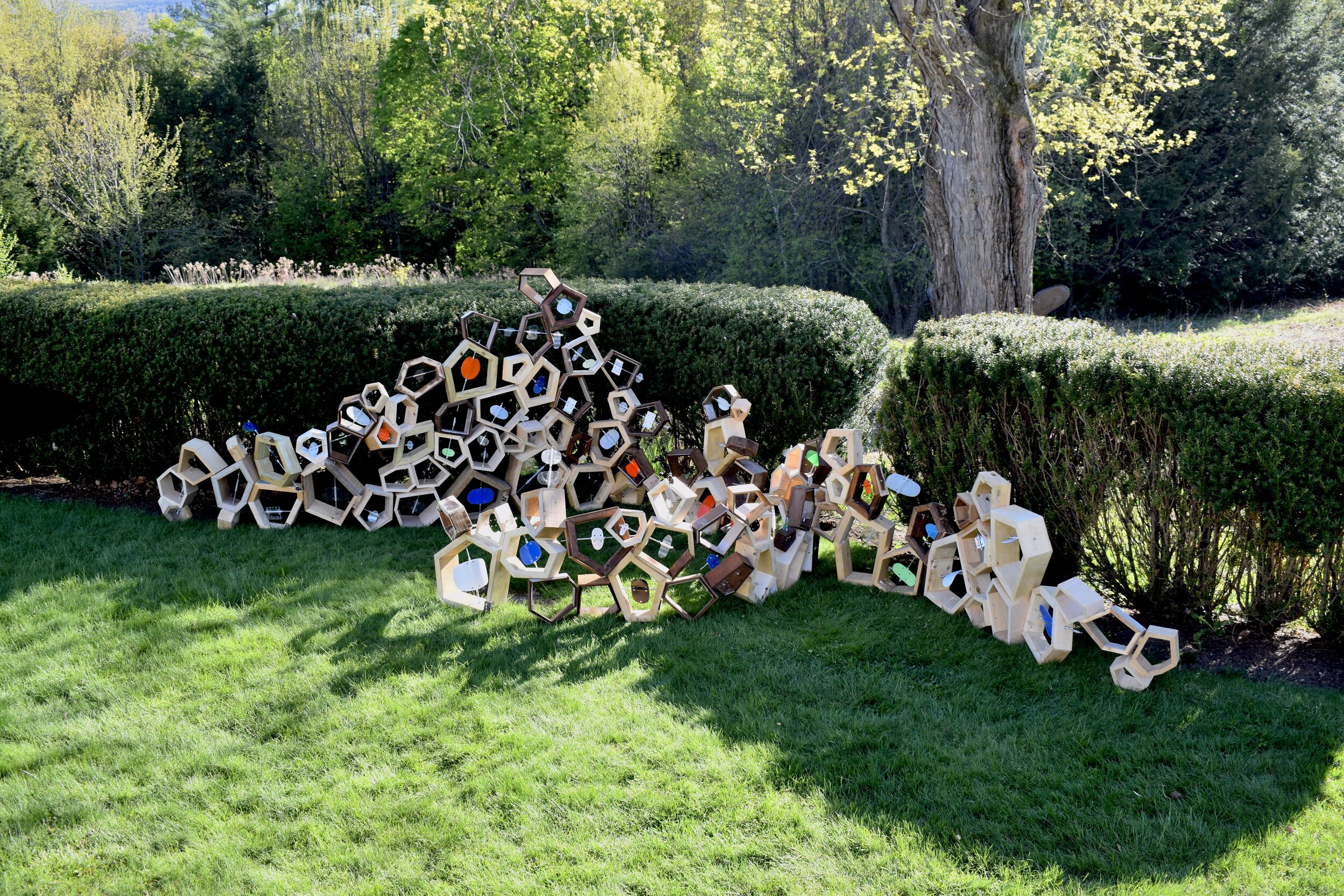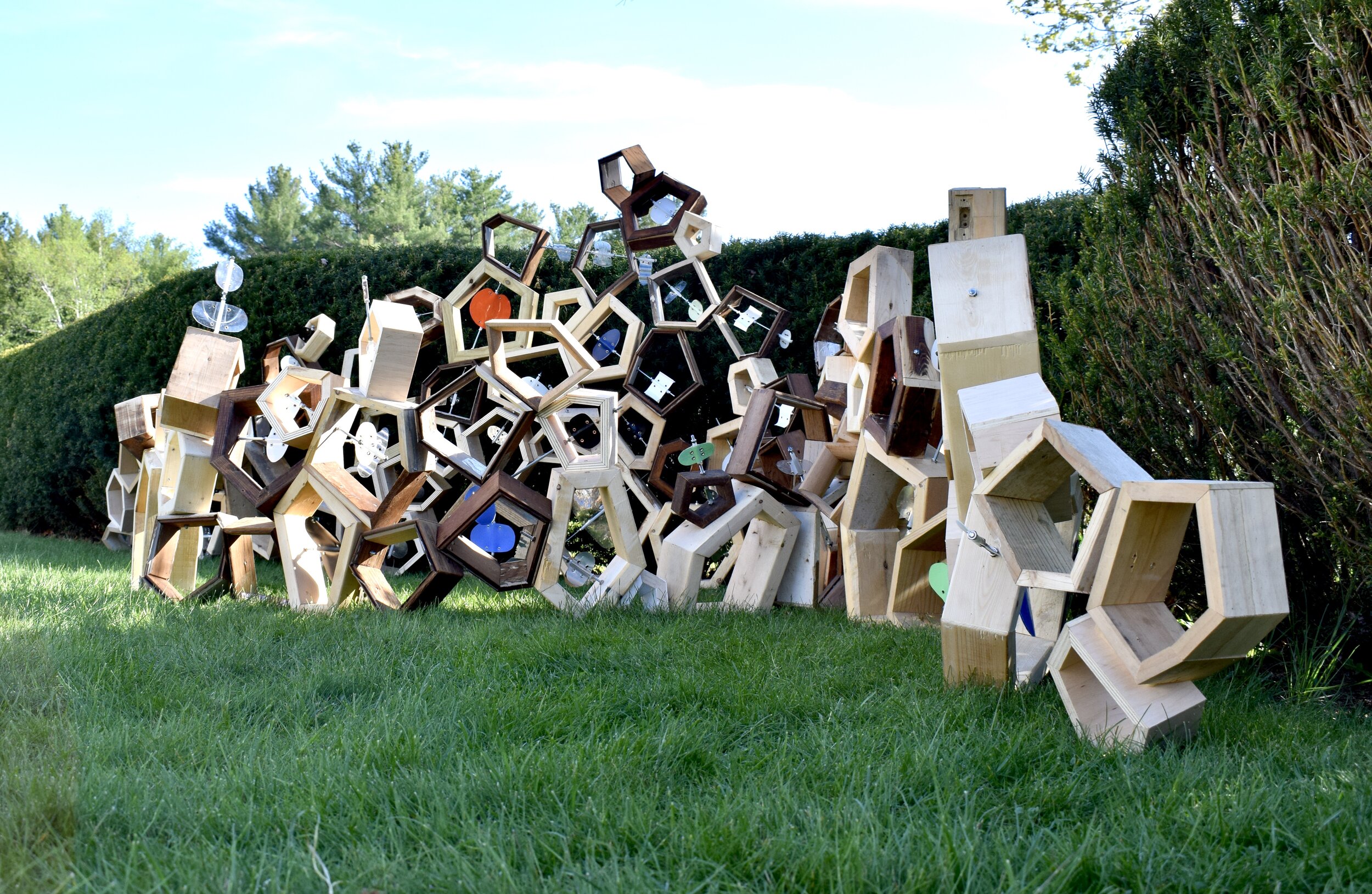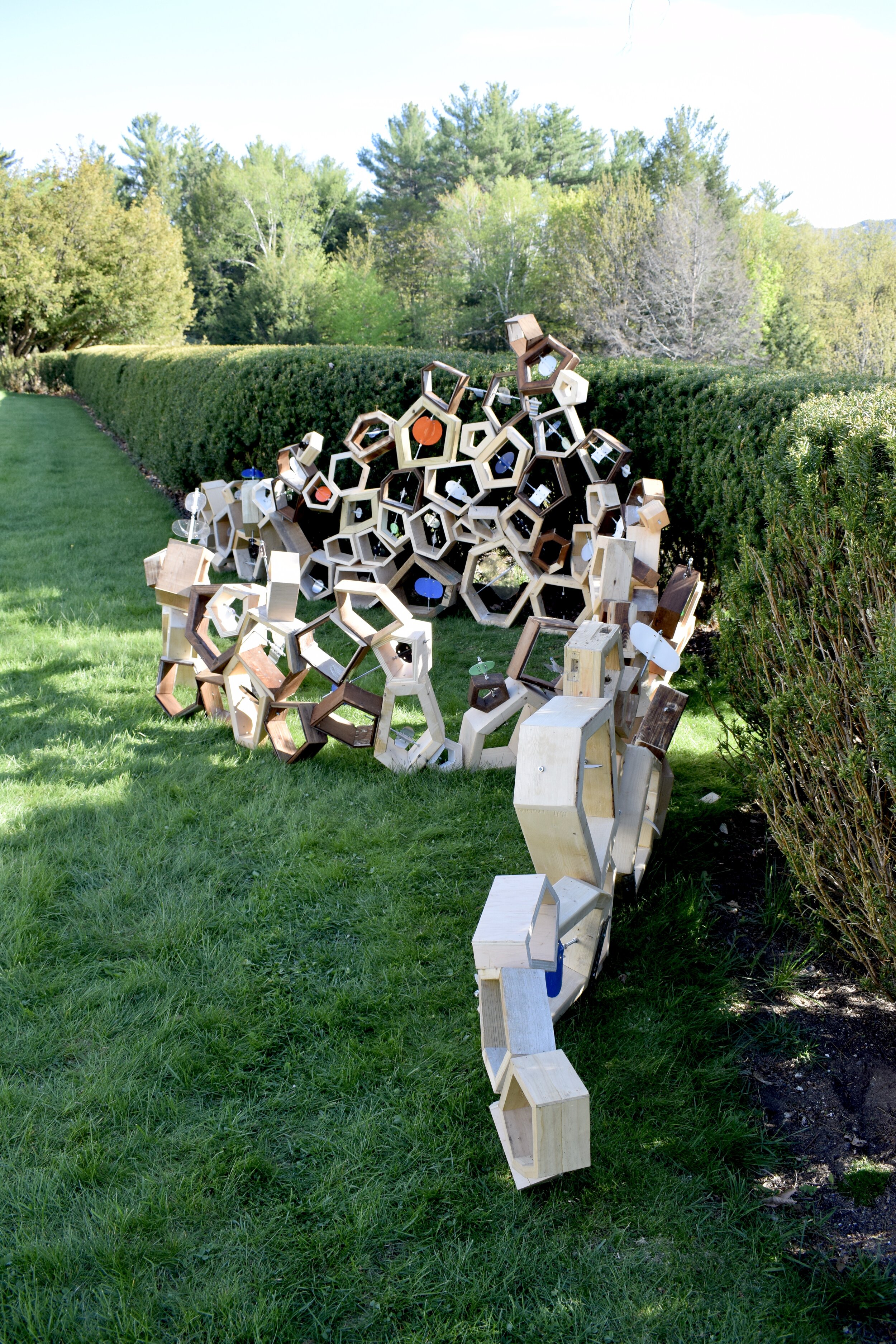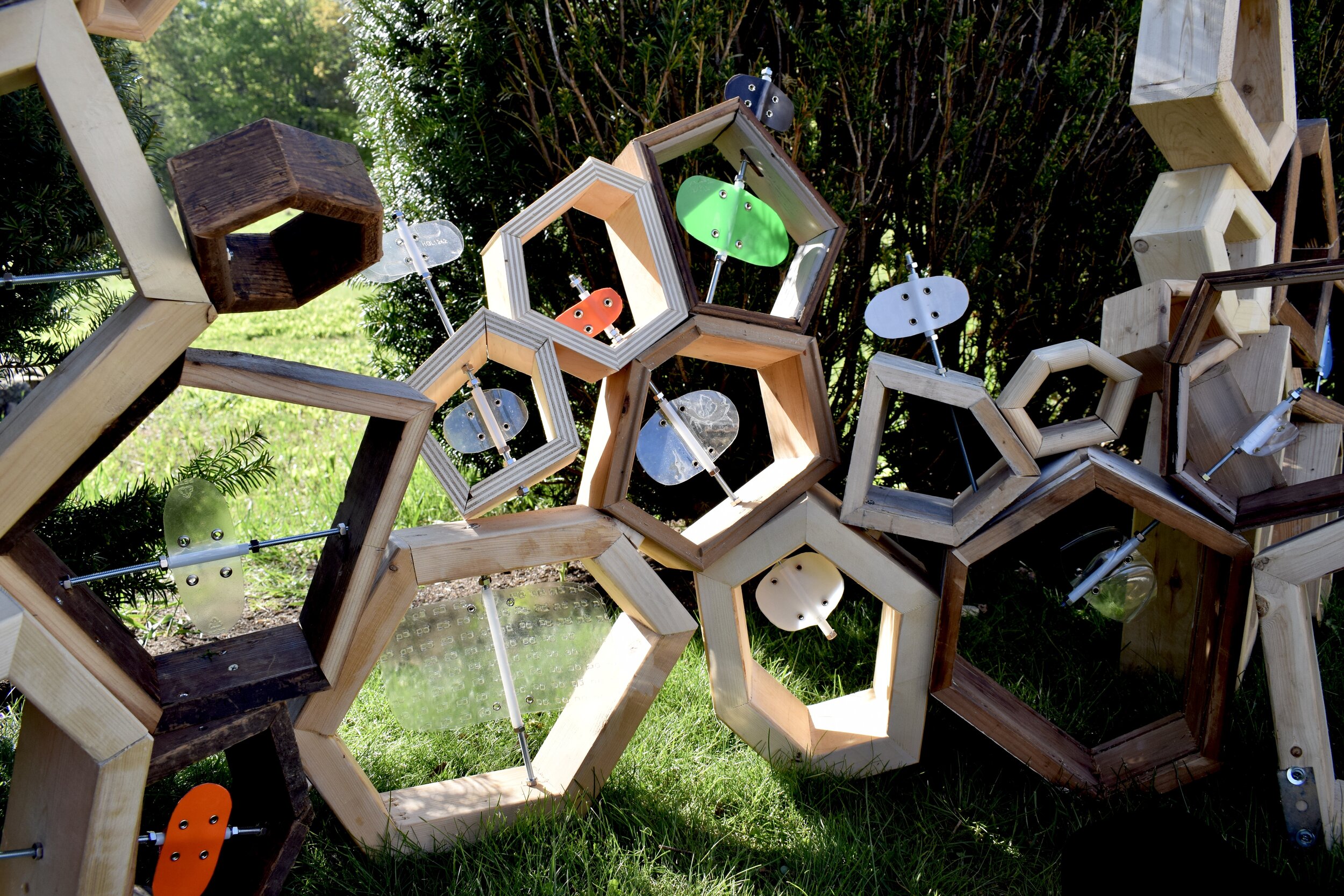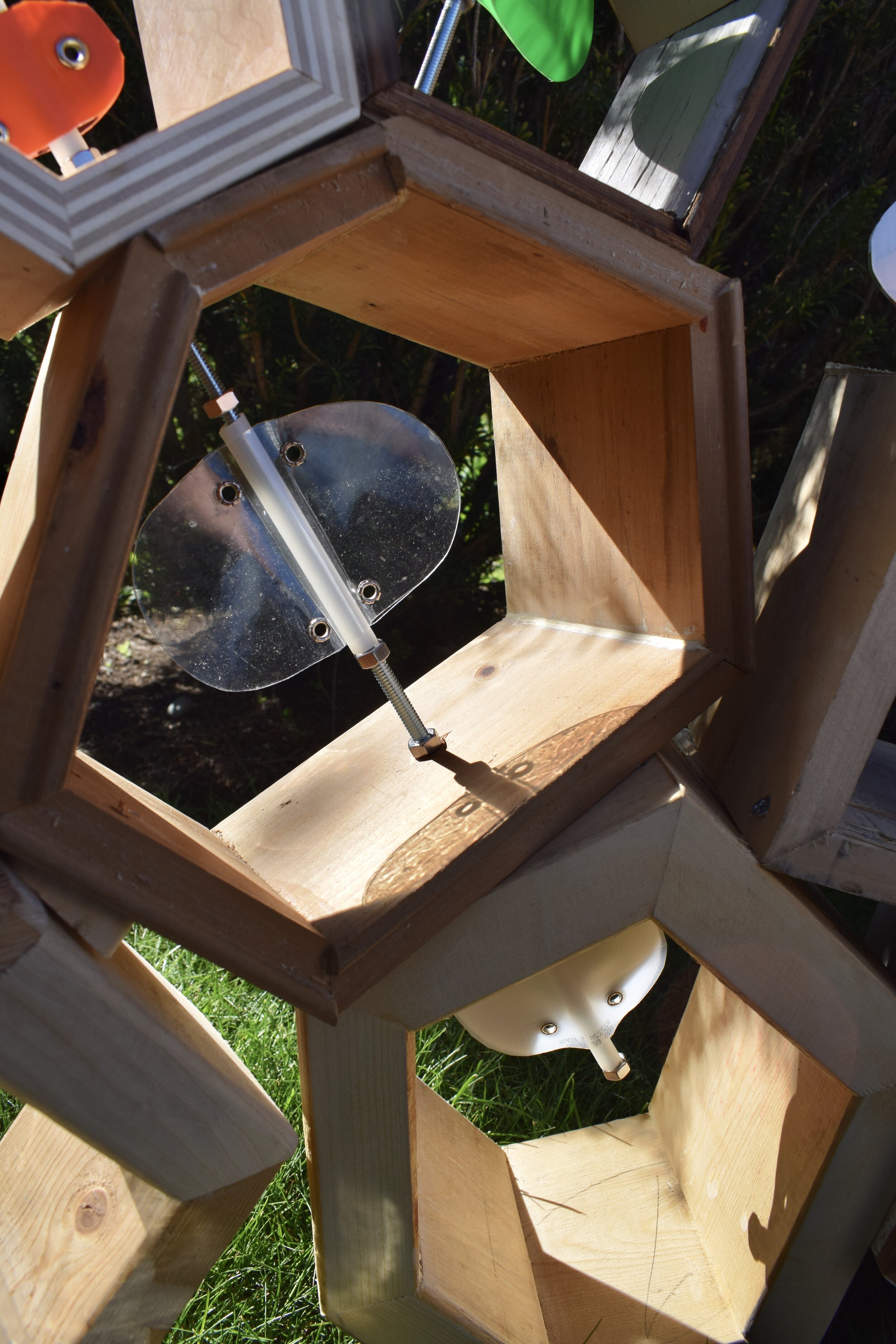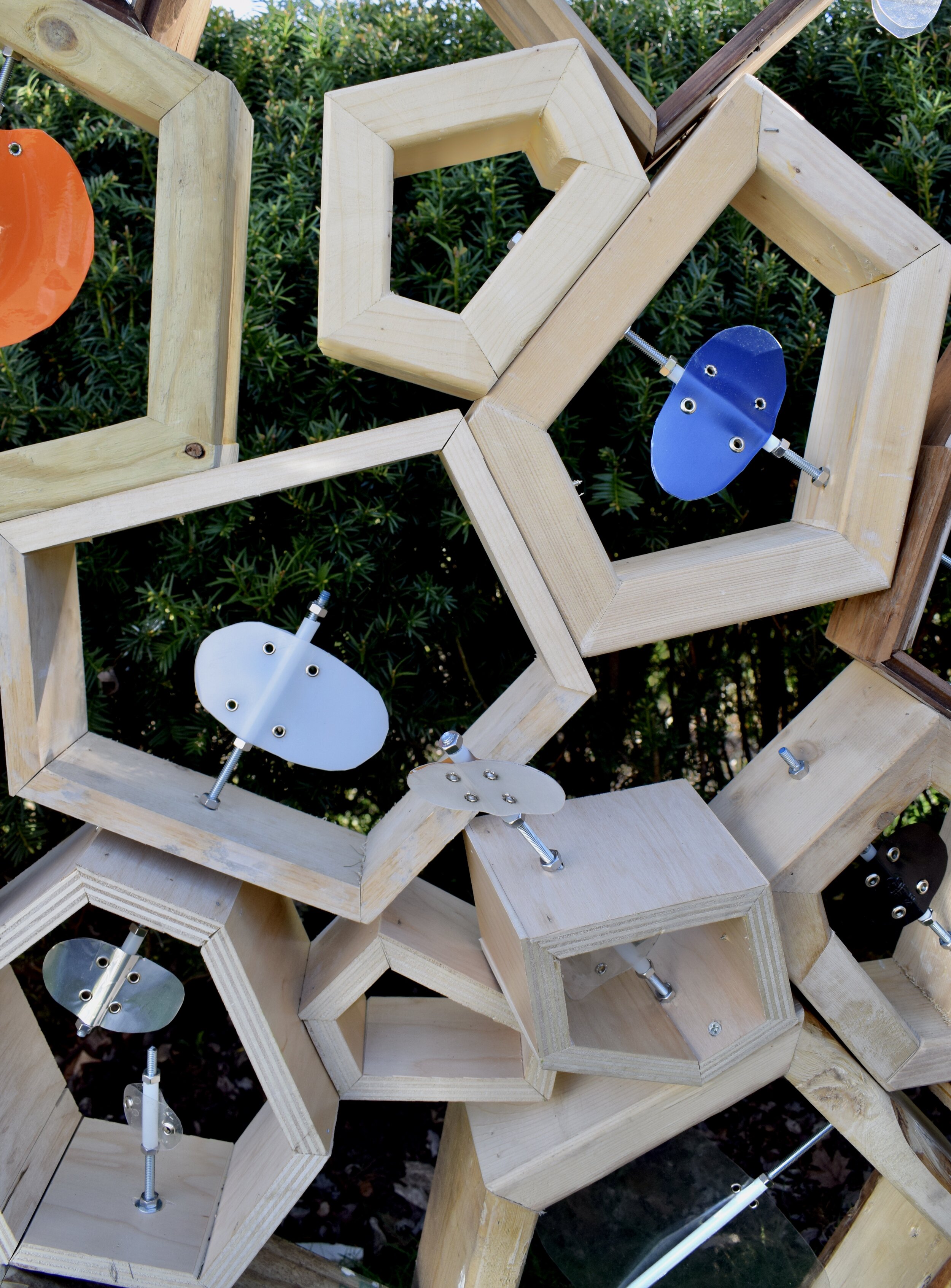Fractal - Collaboration with Sophie Linnell
Fractal is a collaborative, site specific, kinetic sculptural installation specifically created to uphold the ecological mission of the Fells Historic Estate in Newbury, New Hampshire. The work sets out to explore the biomorphic nature of repetition and the unassuming slow process of revelation through physical and tactile experience. For this project I worked with Sophie Linnell a Boston based sculptor and furniture maker.
A fractal is a pattern bound by the laws of nature that repeats at different scales. You can find examples everywhere in the forest and in the gardens on this site. Trees are natural fractals, patterns that repeat smaller and smaller copies of themselves to create the biodiversity of a forest. Branches are like telescoping mechanisms reaching out for the sun. Each tree branch, from the trunk to the tips, is a copy of the one that came before it. This is a basic principle that we see over and over again in the fractal structure of organic life forms throughout the natural world.
The piece reveals itself in various ways and transforms via the kinetic energy of wind. Modular cell-like forms come together, piece by piece, to create an organic, transformed, and connected space. The exterior frames are made of discarded wood scraps that have been reclaimed from construction sites. Small propellers made of everyday recyclable material within each of the irregular polygon cells, create sound, movement, and reflection of light as a part of the immersive experience.
As we learn to see the beauty and purpose in the slow and unassuming process of nature, we question the value of that which we leave behind — the discarded refuse. Our sense of beauty and worth is held in the way we frame things: the way we give name to things. The multiple repeating apertures within the composition outline different aspects of the landscape and create movement, inside and out, drawing attention to that which is open — to that which changes. Breaking our normal patterns and giving attention to these small acts, small movements as they build over time, results in a transformation of the way we see. Perhaps garbage isn’t garbage at all. Perhaps if we reframe the way we think it can be used as a valuable resource to benefit nature.
